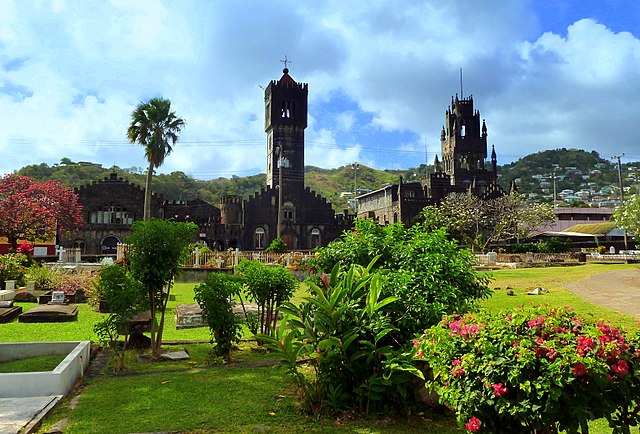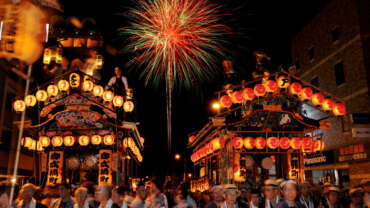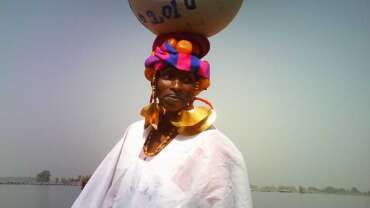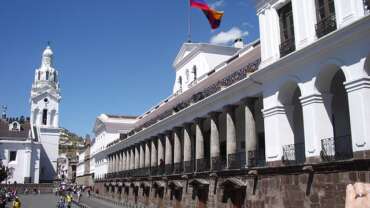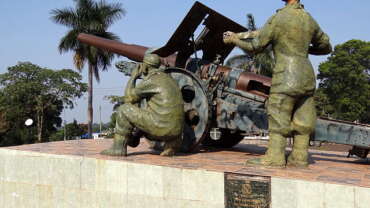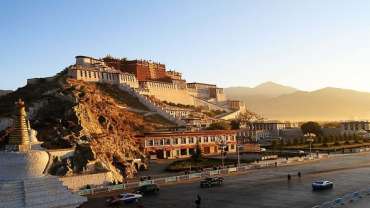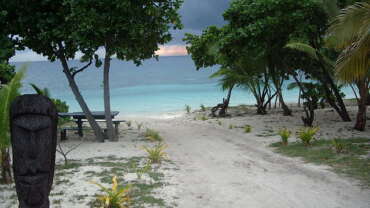St. Vincent and the Grenadines - Jewels of Caribbean
St. Vincent and the Grenadines is a southern Caribbean nation comprising a main island, St. Vincent, and a chain of smaller islands. With yacht-filled harbors, chic private isles and volcanic landscapes, it’s known for its major sailing destinations such as reef-lined Bequia Island off Admiralty Bay, bordered by white-sand beaches like Princess Margaret. The main island is home to the capital, Kingstown.
History of St. Vincent and the Grenadines
Colonization
Before the time of European contact, Saint Vincent was first inhabited by the Ciboney, who were joined and eventually displaced or conquered by an Arawak people who had originated in Venezuela and settled the West Indies. About a century before the arrival of European explorers, the Arawak were themselves displaced by another group, the Carib, who originated from South America.
It was formerly thought that Christopher Columbus first visited the island and named it Saint Vincent on Jan. 22, 1498, a day that used to be celebrated as “Discovery Day.” It is now known that Columbus was still in Spain on that day, and there is no evidence to suggest that he ever visited Saint Vincent.
In the 17th century a group of so-called “Black Caribs,” also known as the Garifuna, was formed from intermarriage between the indigenous Caribs and more-recent African arrivals. The Africans were mainly slaves who had escaped from plantations in Barbados or were taken from raids on European plantations; other Africans came from a party of slaves who were shipwrecked in the Grenadines in either 1635 or 1673 (both dates are frequently given) and eventually reached the Saint Vincent mainland.
The Caribs resisted frequent British, French, and Dutch attempts to settle in Saint Vincent, but they eventually allowed limited French settlement of the island’s west coast in the early 18th century. This move was likely aimed at gaining French support against the more aggressive English. In 1763, with the Treaty of Paris, Britain was granted control of Saint Vincent and settlement proceeded, although the Caribs refused to accept British sovereignty. In 1779 the island was seized by the French, but in 1783 it was restored to Britain under the Treaty of Versailles. The Caribs’ ongoing resistance to British presence led to two wars (1772–73 and 1795–96); the Caribs were exiled following the second. Most were deported to an island off the coast of Honduras, from which they later migrated to Belize and other areas along the Atlantic coast of Central America. Those who remained sought refuge in the interior of the island until an act of the colonial legislature in 1805 pardoned them for their rebellion, which had been deemed treasonous.
Following the conquest of the Caribs, the British government took full control of the country. After the Treaty of Paris of 1763, Saint Vincent had become part of an administrative union known as the Windward Islands. The union comprised the islands of Grenada, Saint Vincent, Dominica, Tobago, and the Grenadines; they shared a common representative assembly and a seat of administration in Grenada. This union soon collapsed, and the islands were given separate representative assemblies. In 1791 the islands of the Grenadines were partitioned between Grenada and Saint Vincent, with Saint Vincent having administrative control over the ones to the north; these were closer to Saint Vincent and therefore could more effectively be administered by it. This system of administration lasted until 1877. It was replaced by a crown colony system in which a governor and a nominated council administered the islands on behalf of the British crown.
A plantation economy grew, producing sugar, cotton, coffee, and cocoa with the use of the labour of enslaved Africans. The emancipation of the slaves in 1834 increased the bargaining power of the former slaves and reduced the planters’ total control; Portuguese and South Asian labourers were introduced later in the century to increase competition and weaken the position of the emancipated people in the labour market.
In the latter half of the 19th century, sugar prices fell, plunging the island into a depression that lasted through the end of the century. The hurricane of 1898 and the eruption of Soufrière in 1902 were especially damaging to agriculture, hindering economic recovery, and virtually signaled the end of the sugar industry. Sugar was replaced as the major crop by arrowroot and Sea Island cotton, which remained the dominant export crops until their place was taken by bananas in the 1950s.
The 20th century was dominated by a struggle to replace the crown colony system of government by a representative system. A legislative council was established in 1925, but the franchise was limited and the majority of descendants of slaves were kept out of the process. Efforts to extend the franchise and to get further constitutional reform culminated in a federation of the islands. Riots in the mid-1930s, sparked by fallout from the Great Depression, paved the way for further constitutional reform that reached a climax in 1951, when universal adult suffrage was introduced. Saint Vincent also joined the West Indies Federation, which existed from 1958 to 1962. A new constitution was adopted in 1960. Saint Vincent became a state in association with the United Kingdom on Oct. 27, 1969; it had become a member of the Caribbean Free Trade Area on July 1, 1968. It joined the Caribbean Community and Common Market (Caricom) in 1973 and the Organisation of Eastern Caribbean States in 1981.
Independence
After the collapse of the West Indies Federation in 1962, efforts began that were aimed at creating political union among different groupings of the federation’s former members, but the efforts did not bear fruit. Most of the islands sought independence individually. Independence for Saint Vincent was achieved on Oct. 27, 1979. Shortly thereafter, the political entity became known officially as Saint Vincent and the Grenadines. The new government was formed as a constitutional monarchy and became a member of the Commonwealth. The country held its first elections in December of that year. The Saint Vincent Labour Party, the ruling party of the time, won the elections, and its leader, Milton Cato, became the first prime minister of the independent country. Cato, a Caribbean nationalist, favoured closer links with the relatively centrist governments of Trinidad and Tobago and of Barbados.
In 1979 the Soufrière volcano erupted once again, damaging agriculture and the tourist trade. The banana industry was seriously damaged by Hurricane Allen in 1980. Recession in the United States and the falling value of the pound sterling against the dollar further lowered tourist visits and exports of bananas during the early 1980s.
In July 1984 the New Democratic Party, under James Mitchell, won the general elections. Mitchell began a program of reorganizing agriculture and of lowering unemployment by encouraging the construction industry and facilitating land settlement among landless agricultural workers. Mitchell’s party won the next several elections. He remained in office until his retirement from the presidency in August 2000 and was succeeded by Arnhim Eustace. A general election was called for March 2001; the left-wing Unity Labour Party won a decisive majority, and its leader, Ralph Gonsalves, became prime minister.
The people of Saint Vincent and the Grenadines, like other people of the Commonwealth Caribbean, see the deepening of a regional integration movement as one of their goals. In the early 21st century the various countries were concerned with the creation of a Caribbean single market and economy, and in December 2009 a subgrouping of members of the Organisation of Eastern Caribbean States—including Saint Vincent and the Grenadines—signed a treaty establishing an economic union. Since independence many attempts also have been made to form a political union, including, in the early years of the 21st century, one seeking to link Saint Vincent and some of the other eastern Caribbean states with Trinidad and Tobago.
A seven-year process to reform the 1979 constitution culminated in November 2009 with a national referendum. Voters rejected the proposed draft constitution, which would have replaced the British monarch as head of state with a president elected by the legislature; it also would have established the Caribbean Court of Justice as the country’s highest court of appeal in place of the Privy Council in London.
People of St. Vincent and the Grenadines
Some seven-tenths of the inhabitants are descended from Africans who were enslaved and brought to work on the sugar plantations, and nearly one-fourth of the population is of mixed African, European, and Carib ancestry. There are small minorities of people of South Asian, European, and Carib descent. Those of mixed African and Carib descent are known as the Garifuna. English is the official language. An English patois is commonly spoken and referred to in some academic quarters as “nation language” (that is, a postcolonial version of a language that was imposed by colonizers—in this case, English—that incorporates underground language codes from formerly suppressed languages, in this case the African languages of the slaves).
Some three-fourths of the population is Protestant, and less than one-tenth of the population is Roman Catholic. The Spiritual Baptist, or Shaker (as it was known in Saint Vincent), church, a syncretic Protestant-African faith, was banned from 1912 to the 1960s, but in the late 20th century the church began a significant resurgence. There are also branches of North American Evangelical churches, and there are smaller numbers of Hindus and Muslims.
Life expectancy is about 70 years for males and in the mid-70s for females. Saint Vincent and the Grenadines once had one of the highest birth rates in the West Indies. That figure declined drastically in the late 20th century, however, largely as the result of government family-planning efforts, and by the early 21st century it was roughly equivalent to the West Indian average. The rate of natural increase declined likewise over the same period. The country has a high rate of emigration.
Tourism in St. Vincent and the Grenadines
Tourism has assumed a significant role in the economy, especially with the greater accessibility of the Grenadines through the airports established throughout the islands and the use of larger and more modern boats. Noted for their coral reefs and fine beaches, the Grenadines serve as the focus of the country’s tourism sector. They are particularly favoured by those interested in yachting and sport fishing and lend themselves to Caribbean tourism’s traditional emphasis on sun, sea, and sand. One of the Grenadines, the island of Mustique, is privately owned by a consortium of landowners, many of whom rent their property to vacationers. Ecotourism is being encouraged on the main island, Saint Vincent.
Transportation
The country’s major airport, Argyle International Airport, is located in the southeastern portion of Saint Vincent. Several of the Grenadines also have airstrips. Kingstown has a deepwater port and a cruise ship berth.
Transport on the island of Saint Vincent is adequate. A road network runs along most of the coast from Chateaubelair in the northwest, down to the south coast, and back up to Fancy on the northeastern side of the island. The area on the western side from Fancy to Chateaubelair is extremely rocky, and the roughness of the terrain has prevented the completion of the road network around the island. A series of feeder roads were built from the coastal area inland to facilitate the movement of agricultural products to the markets and to serve numerous inland communities.
WHICH ISLAND IS RIGHT FOR YOU?
The multi-island Caribbean nation offers a unique combination of rainforest eco-adventures, spectacular scuba diving, classic Caribbean powder-white sand beaches, luxury accommodation and amazing yachting & sailing adventures. Though one nation, our diverse cultural traditions add a richness to our society that is unique in this day and age.



